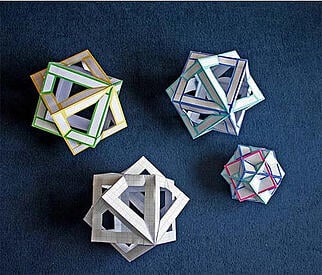By Rick Ryan, Envisn, Inc.
 At IOD in Las Vegas last week the session titled “Making the Move to Dynamic Query” more than half the 200 attendees came expecting to learn about the migration path for users of Power Cubes (PowerPlay) to Cognos Dynamic Cubes. This became obvious in the first few minutes of that session by the questions that were asked. IBM Cognos does not see Dynamic Cubes as the evolution of Power Cubes. They see Dynamic Cubes filling a different market need.
At IOD in Las Vegas last week the session titled “Making the Move to Dynamic Query” more than half the 200 attendees came expecting to learn about the migration path for users of Power Cubes (PowerPlay) to Cognos Dynamic Cubes. This became obvious in the first few minutes of that session by the questions that were asked. IBM Cognos does not see Dynamic Cubes as the evolution of Power Cubes. They see Dynamic Cubes filling a different market need.
Different Market
Dynamic Cubes is an extension of Dynamic Query Mode that was introduced two years ago at IOD in 2010. They work by leveraging substantial in-memory data assets as well as data aggregations to achieve high performance interactive analysis and reporting over terabytes of warehouse data. In fact, most of the examples cited in this presentation focused on their role as a fast-feeder data source for reports and queries involving large amounts of data. A key requirement is that the warehouse data needs to be structured in a star or snowflake schema in order for this to work.
Scale is a key part of the conceptual understanding for the role that Dynamic Cubes are seen to play in the business analytics market. To successfully perform high speed rendering of results from terabyte sized warehouses requires aggregation of the data. The aggregates are created using the Aggregate Advisor from the Dynamic Query Analyzer. The Advisor can review a cube and recommend either in-database or in-memory aggregates which it determines will help performance. The Advisor can also review workloads of reports, packages, specific users, etc. for which to optimize aggregates. It will also continually optimize previously created aggregates based on actual use to insure that they are tuned for fast performance.
How Does This Work?
These are not physical cubes such as Power Cubes or TM1. Think of these as virtual cubes. They’re based on in-memory aggregates and query routing to database aggregate tables with an active connection to the underlying database. A key benefit of this architecture is that you can drill down to details within the same report or area of analysis without having to create a drill-through to detail report from a Power Cube.
Two key things are behind are making this technology work: First, 64 bit architecture and lots of memory; Second, SQL optimization that ensures getting the right SQL query to the data warehouse technology.
What About Power Cubes?
Power Cubes and PowerPlay itself are clearly a part of the IBM Cognos OLAP picture. IBM lists four areas of cube technology:
- IBM Cognos TM1 – For handling medium size data volumes where write-back, what-if analysis, planning and budgeting are important.
- IBM Cognos Dynamic Cubes – Optimal for read-only reporting and analytics over large data volumes.
- IBM Cognos Power Cubes – Optimal for consistent interactive analysis to a large number of users when the data source is operational/transactional data where a star of snowflake structure is not possible.
- OLAP Over Relational – Optimal to easily create a dimensional data exploration experience over low data volumes in an operational/transactional system and where latency needs to be carefully managed.
It appears that a key differentiator between Dynamic Cubes and Power Cubes is the number of users. For large numbers of users already successfully using PowerPlay, moving to Dynamic Cubes may not always result in a major win.
When the presenter was asked, “Will Dynamic Cubes replace Power Cubes?” the response was, “We’re not sure at this time.” That doesn’t represent much in the way of a statement of direction for PowerPlay users. And for those that are currently struggling with exponentially growing data and lengthening build times the need for a better answer is obvious.
Summary
The biggest gains in query reporting and analysis can be made through data access improvements. And Dynamic Cubes represent a major performance improvement when correctly positioned against the right need. Due diligence is recommended to insure it’s the right solution. A pilot project is strongly recommended for those considering Dynamic Cubes in their environment.
Image by the yes man
© 2012 - Envisn, Inc. - All Rights Reserved




